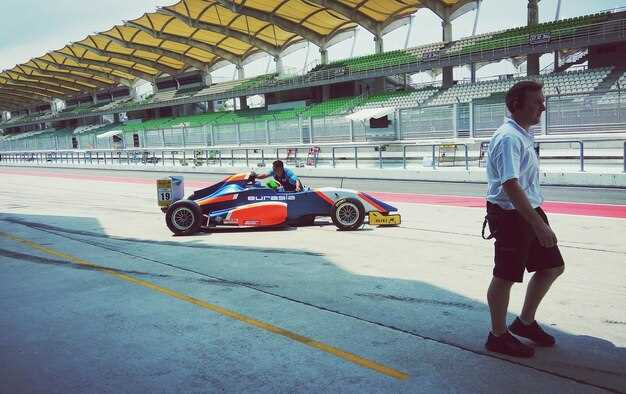
When it comes to the world of motorsports, IndyCar and Formula 1 stand out as two of the most popular and prestigious racing series. While both categories showcase incredible speed, skill, and engineering prowess, they operate under different rules, feature distinct cars, and follow unique racing formats. Understanding these differences is crucial for fans, as it enhances the appreciation of each discipline and its unique characteristics.
The F1 series is renowned for its advanced technology, global reach, and a well-established hierarchy that includes iconic teams and manufacturers. Races take place on closed circuits that often feature tight turns and elevation changes, challenging drivers to push their limits while maintaining strategic finesse. In contrast, IndyCar combines speed with a more varied set of tracks, including ovals and road courses, allowing for a different style of racing that emphasizes wheel-to-wheel competition and overtaking maneuvers.
This article will dive deep into the fundamental disparities between IndyCar and F1, exploring their technical specifications, race formats, and the overall experience of both the drivers and spectators. By the end, you’ll have a clearer understanding of what sets these two premier racing categories apart, and perhaps cultivate a greater appreciation for the nuances that make each sport unique.
Race Formats: Understanding the Timing and Structure

IndyCar and Formula 1 (F1) have distinct race formats that significantly influence how the seasons unfold and affect team strategies. In F1, races are generally held on a Sunday and consist of a set number of laps, usually around 305 kilometers, or a maximum duration of two hours, whichever comes first. The starting grid is determined by a qualification session held the day before, which influences race strategies as teams fine-tune their cars for varying conditions.
In contrast, IndyCar races, while also featuring a timed component, can include both an oval and road course format. These races often vary in distance, commonly ranging from 200 to 500 miles. They employ a standing start for road courses but utilize a rolling start for ovals. This difference in starting formats can require teams to adapt their setup and strategy, making the races dynamic and sometimes unpredictable.
The F1 race weekend format includes three practice sessions, followed by qualifying, which offers teams limited opportunities to find optimal car performance. IndianaCar, on the other hand, typically has a more condensed schedule, with practice and qualifying often taking place on the same day, especially for weekend races.
Both series feature unique rules regarding pit stops and tire strategies, adding an extra layer of complexity. In F1, teams must carefully manage tire usage, as they are required to use at least two different types of dry-compound tires during a race, promoting strategy around tire wear and performance. IndyCar teams have a bit more flexibility with tire choices and can strategize depending on track conditions, but they also must manage their fuel effectively because races can vary considerably in length.
In summary, the race formats of F1 and IndyCar not only shape the race day experience but also affect team strategies significantly. Understanding these structures is crucial for fans and participants alike to appreciate the unique challenges presented by each series.
Vehicle Design: Key Technical Variations Between Series
The design of vehicles in IndyCar and Formula 1 (F1) exhibits significant differences, influenced by their respective racing environments and regulations. One of the primary distinctions lies in the chassis design. F1 cars utilize a bespoke chassis that varies widely between teams, enabling them to tailor designs for aerodynamics, weight distribution, and safety features. Conversely, IndyCars are built around a standardized chassis provided by Dallara, promoting a level of parity among teams but reducing the scope for unique engineering solutions.
Aerodynamics play a crucial role in both series, but the approach differs markedly. F1 vehicles are equipped with highly complex aerodynamic components, such as intricate wings and bargeboards, which are constantly optimized for track conditions. In contrast, IndyCars feature a simpler aerodynamic structure due to the need for efficiency on ovals and road courses, which influences their downforce and drag configurations.
Another essential aspect is the engine design. F1 cars utilize hybrid powertrains that integrate a turbocharged internal combustion engine with an energy recovery system. This allows for enhanced performance and efficiency but requires sophisticated energy management. On the other hand, IndyCar employs a more straightforward approach with either a turbocharged V6 engine, focusing on high output and reliability, especially during endurance races.
Tires also highlight a critical variances. F1 teams work closely with Pirelli to select tires tailored for specific track surfaces and conditions, adjusting compounds and setups frequently. IndyCar uses Firestone tires, with specifications that cater to both road and oval circuits, emphasizing durability and consistency over ultimate performance.
In summary, while both IndyCar and F1 aim to create the fastest and most efficient racing machines, they do so through fundamentally different design philosophies, influenced by their regulations, track types, and overarching racing goals.
Global Reach: Comparing Their Popularity and Fan Engagement

When analyzing the global reach of IndyCar and Formula 1, several factors illustrate their popularity and fan engagement. Formula 1 has established itself as a global phenomenon, boasting a fanbase that spans continents, particularly in Europe, Asia, and the Americas. Its races attract millions of viewers both on-site and through broadcasts, highlighting the sport’s significant international appeal.
In contrast, IndyCar primarily enjoys popularity in North America, particularly in the United States. While IndyCar has a loyal following, its audience size is considerably smaller compared to that of Formula 1. The Indianapolis 500 remains a pinnacle event, drawing in large crowds, but it does not consistently achieve the same global television ratings seen in F1 races.
Fan engagement strategies also differ markedly between the two series. Formula 1 has capitalized on digital content, social media interaction, and behind-the-scenes access to enhance viewer connection. Platforms like Netflix have further augmented interest through docuseries that delve into the sport’s inner workings, broadening its appeal to younger audiences.
On the other hand, IndyCar emphasizes community involvement, often engaging fans through local events and initiatives that resonate with the American public. While IndyCar has made strides in enhancing its digital presence, including the use of social media for fan interaction, it still lags behind in terms of global engagement compared to Formula 1.
In summary, the comparison of global reach and fan engagement reveals that while Formula 1 dominates the international stage, IndyCar maintains a strong regional presence. Both series continue to evolve, but the disparity in their popularity and global fan engagement strategies is evident.




